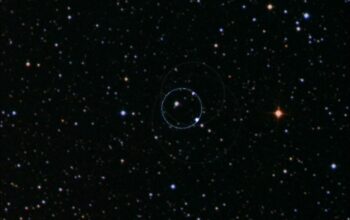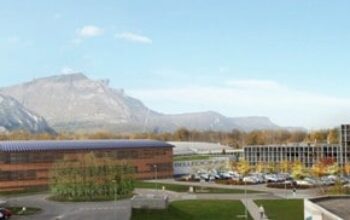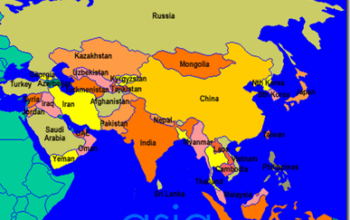The enigma of black holes has long captivated astrophysicists and the broader scientific community. These celestial entities possess gravitational fields so intense that even light cannot escape their clutches. Recent investigations have illuminated yet another facet of black hole dynamics: the winds generated by these effulgent titans are stronger than previously anticipated, rivalling our understanding of galactic gas dynamics and evolution. Indeed, one might wonder: can the forces produced by black holes be potent enough to reshape entire galaxies?
To unravel this phenomenon, one must first grasp the fundamental nature of black holes. At their essence, black holes are categorized into different classes based primarily on their mass. The most well-known are stellar black holes, formed from the remnants of massive stars after they undergo supernova explosions. Supermassive black holes, residing at the centers of most galaxies, are significantly more massive and are believed to have formed through processes involving accretion of gas and the merger of smaller black holes. However, this categorization belies the complex interactions that occur between black holes and their surrounding environments.
A pivotal aspect of black hole behavior is the accretion disk—a disc-shaped region of gas and dust spiraling towards the black hole. As matter is drawn into this disk, it experiences immense gravitational and frictional forces, resulting in the emission of high-energy radiation, particularly X-rays. This energetic outpouring can precipitate powerful winds that emanate from the vicinity of the black hole. Traditionally, it was posited that these winds had a subdued impact on the intergalactic medium. Yet, emergent data from recent observational studies contradicts this assumption.
In an innovative effort, astronomers utilized advanced telescopes and spectrometers to trace the composition and movement of gas in galaxies hosting supermassive black holes. The results illuminated a remarkable discovery: the winds generated by these black holes are not merely streams of gas dissipating into the void; they represent a formidable force that substantially influences the gas reservoirs of their host galaxies. This unexpected realization provides insight into a previously underappreciated feedback mechanism within galactic ecosystems.
The study of black hole winds raises intriguing questions regarding the stability of galactic structures. One may inquire how such vigorous outflows can affect star formation rates and the fate of gas clouds within galaxies. The winds exert pressure on existing gas, expelling material that could otherwise contribute to star formation. By redistributing these baryonic components, black hole winds could potentially trigger a feedback loop that curtails star formation and modulates the lifecycle of entire galaxies. This interplay challenges long-standing models of galaxy evolution and compels astrophysicists to reevaluate the intricate tapestry of dynamics at play.
Furthermore, the implications of these findings extend beyond mere academic curiosity. The stronger-than-anticipated black hole winds could serve as a mechanism to address the “missing baryon problem”—a perplexing conundrum in cosmology concerning the apparent deficiency of ordinary matter in the universe. The material expelled by black holes may be enriching the intergalactic medium with baryons, thereby altering our conception of large-scale structure formation. In essence, the very winds that seemed to hamper star formation could also be contributing to the broader cosmic tableau.
Equally fascinating is the relationship between black hole activity and the formation of galactic jets—colossal beams of charged particles ejected at relativistic speeds. These jets are often seen in conjunction with the active galactic nuclei (AGN) of supermassive black holes and represent another channel through which energy and momentum influence the surrounding intergalactic medium. The connection between black hole winds and jets is a tantalizing avenue for future research, offering the prospect of unifying our understanding of various high-energy astrophysical phenomena.
Challenges abound, however, as researchers endeavor to decipher the precise mechanisms governing black hole wind dynamics. Theories must reconcile observations across a spectrum of wavelengths—from X-ray emissions mapping energetic winds to low-frequency radio emissions illustrating the expanse of jets. Additionally, researchers must develop robust models that account for the complex interplay of gravitational, hydrodynamic, and thermodynamic processes involved in these astrophysical events.
To adeptly navigate these challenges, advancements in computational astrophysics are vital. Sophisticated simulations can model the intricate behavior of gas around black holes, providing insights that may be unattainable through observation alone. These models must encapsulate the nonlinear dynamics of plasma and magnetohydrodynamics, which are critical for understanding wind generation and propagation.
As a community, astrophysicists must embrace multi-disciplinary approaches that amalgamate observational data, theoretical considerations, and computational simulations. This comprehensive strategy will forge pathways to deeper insights into not only black hole winds but also their profound implications for galactic evolution. The next decade promises to be transformative as next-generation telescopes and instruments come online, enabling unprecedented explorations of these enigmatic phenomena.
In closing, the revelation that black hole winds are stronger than previously conjectured challenges prevailing paradigms and opens novel inquiries into the Machinations of galaxies. The playful question posed earlier—can the forces derived from black holes genuinely shape galaxies?—remains not only relevant but imperative in guiding research moving forward. As our understanding of these cosmic giants matures, exploratory endeavors may yield critical revelations about the structure and fate of the universe itself.










